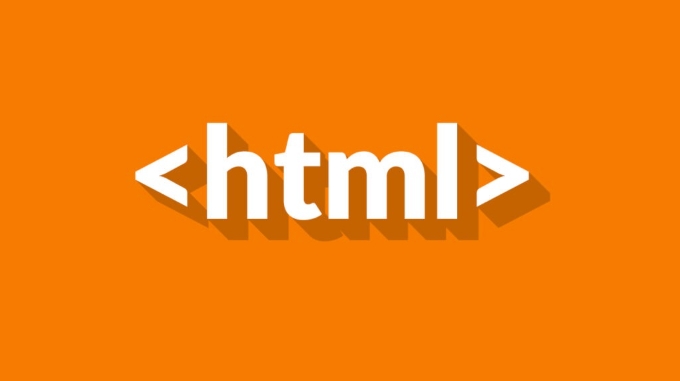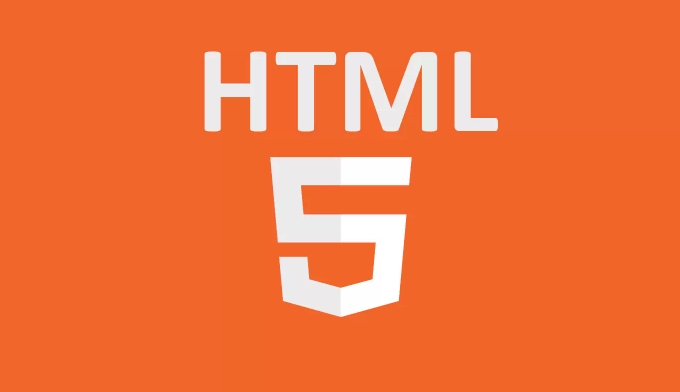In web development, the way to make an image a clickable link is to use the tag to wrap the <img src="/static/imghw/default1.png" data-src="https://img.php.cn/upload/article/000/000/000/175191229391552.jpeg" class="lazy" alt="How to make an image a clickable link in HTML?" > tag and set the properties correctly. The specific steps are as follows: 1. Use to define the link address; 2. Nesting  to insert the picture; 3. Control the style and interaction effects through CSS, such as hovering and discoloring, removing underscores, etc.; 4. Pay attention to closing the tags, filling in the alt attributes, ensuring that the link is effective and adapting to the mobile terminal. In this way, users can click on the picture and jump to the specified page, while improving the user experience and page consistency.
to insert the picture; 3. Control the style and interaction effects through CSS, such as hovering and discoloring, removing underscores, etc.; 4. Pay attention to closing the tags, filling in the alt attributes, ensuring that the link is effective and adapting to the mobile terminal. In this way, users can click on the picture and jump to the specified page, while improving the user experience and page consistency.

In web development, it is not difficult to turn images into clickable links, just use the combination of HTML tags to achieve it. The key is to use the <a></a> tag to wrap the <img src="/static/imghw/default1.png" data-src="https://img.php.cn/upload/article/000/000/000/175191229456382.jpeg" class="lazy" alt="How to make an image a clickable link in HTML?" > tag and set the link address correctly.

Use the <a></a> tag to wrap the <img src="/static/imghw/default1.png" data-src="https://img.php.cn/upload/article/000/000/000/175191229391552.jpeg" class="lazy" alt="How to make an image a clickable link in HTML?" > tag
This is the most common practice. You just need to nest the image in the hyperlink tag. The structure is as follows:

<a href="Destination URL"> <img src="/static/imghw/default1.png" data-src="logo.png" class="lazy" alt="Image Description"> </a>
This way, when the user clicks on the image, he will jump to the specified page. for example:
<a href="https://example.com"> <img src="/static/imghw/default1.png" data-src="logo.png" class="lazy" alt="Company Logo"> </a>
What needs to be noted here is:

-
hrefattribute determines the page that will jump after clicking. -
srcis the path to the picture, it can be a local file or a network picture. -
altdescribes the image content, which is important for SEO and accessibility.
Add style or behavior to image links
Sometimes we want to control the appearance of the image link or add some interactive effects. It can be achieved through CSS, such as removing the default underscore, setting borders, hovering effects, etc.
<style>
.image-link {
text-decoration: none;
border: none;
}
.image-link img {
border: 2px solid #ccc;
transition: border-color 0.3s;
}
.image-link:hover img {
border-color: #007BFF;
}
</style>
<a href="https://example.com" class="image-link">
<img src="/static/imghw/default1.png" data-src="logo.png" class="lazy" alt="Company Logo">
</a>Doing this can make the user experience better and it is easier to unify with the overall page style.
Note: Avoid common mistakes
Although it is simple to implement, there are still several error-prone areas to pay attention to:
- Forgot to close the tag : Make sure
<a></a>and<img alt="How to make an image a clickable link in HTML?" >have the correct start and end (<img alt="How to make an image a clickable link in HTML?" >does not have an end tag, but can be used in the self-closed form). - Processing when the image cannot be loaded : be sure to write the
altattribute, so that the information can be conveyed even if the image fails to load. - Link failure : Make sure the
hrefaddress is correct, especially the choice of relative and absolute paths. - Mobile adaptation problem : If the picture is too small and it is not easy to click on the phone, you can consider appropriately enlarging or adding click areas.
Basically these are the operations. It doesn't seem complicated, but if you neglect in actual development, you may cause functional abnormalities, so you should pay more attention to the details.
The above is the detailed content of How to make an image a clickable link in HTML?. For more information, please follow other related articles on the PHP Chinese website!

Hot AI Tools

Undress AI Tool
Undress images for free

Undresser.AI Undress
AI-powered app for creating realistic nude photos

AI Clothes Remover
Online AI tool for removing clothes from photos.

Clothoff.io
AI clothes remover

Video Face Swap
Swap faces in any video effortlessly with our completely free AI face swap tool!

Hot Article

Hot Tools

Notepad++7.3.1
Easy-to-use and free code editor

SublimeText3 Chinese version
Chinese version, very easy to use

Zend Studio 13.0.1
Powerful PHP integrated development environment

Dreamweaver CS6
Visual web development tools

SublimeText3 Mac version
God-level code editing software (SublimeText3)
 Applying Semantic Structure with article, section, and aside in HTML
Jul 05, 2025 am 02:03 AM
Applying Semantic Structure with article, section, and aside in HTML
Jul 05, 2025 am 02:03 AM
The rational use of semantic tags in HTML can improve page structure clarity, accessibility and SEO effects. 1. Used for independent content blocks, such as blog posts or comments, it must be self-contained; 2. Used for classification related content, usually including titles, and is suitable for different modules of the page; 3. Used for auxiliary information related to the main content but not core, such as sidebar recommendations or author profiles. In actual development, labels should be combined and other, avoid excessive nesting, keep the structure simple, and verify the rationality of the structure through developer tools.
 Implementing Clickable Buttons Using the HTML button Element
Jul 07, 2025 am 02:31 AM
Implementing Clickable Buttons Using the HTML button Element
Jul 07, 2025 am 02:31 AM
To use HTML button elements to achieve clickable buttons, you must first master its basic usage and common precautions. 1. Create buttons with tags and define behaviors through type attributes (such as button, submit, reset), which is submitted by default; 2. Add interactive functions through JavaScript, which can be written inline or bind event listeners through ID to improve maintenance; 3. Use CSS to customize styles, including background color, border, rounded corners and hover/active status effects to enhance user experience; 4. Pay attention to common problems: make sure that the disabled attribute is not enabled, JS events are correctly bound, layout occlusion, and use the help of developer tools to troubleshoot exceptions. Master this
 Configuring Document Metadata Within the HTML head Element
Jul 09, 2025 am 02:30 AM
Configuring Document Metadata Within the HTML head Element
Jul 09, 2025 am 02:30 AM
Metadata in HTMLhead is crucial for SEO, social sharing, and browser behavior. 1. Set the page title and description, use and keep it concise and unique; 2. Add OpenGraph and Twitter card information to optimize social sharing effects, pay attention to the image size and use debugging tools to test; 3. Define the character set and viewport settings to ensure multi-language support is adapted to the mobile terminal; 4. Optional tags such as author copyright, robots control and canonical prevent duplicate content should also be configured reasonably.
 Best HTML tutorial for beginners in 2025
Jul 08, 2025 am 12:25 AM
Best HTML tutorial for beginners in 2025
Jul 08, 2025 am 12:25 AM
TolearnHTMLin2025,chooseatutorialthatbalanceshands-onpracticewithmodernstandardsandintegratesCSSandJavaScriptbasics.1.Prioritizehands-onlearningwithstep-by-stepprojectslikebuildingapersonalprofileorbloglayout.2.EnsureitcoversmodernHTMLelementssuchas,
 How to associate captions with images or media using the html figure and figcaption elements?
Jul 07, 2025 am 02:30 AM
How to associate captions with images or media using the html figure and figcaption elements?
Jul 07, 2025 am 02:30 AM
Using HTML sums allows for intuitive and semantic clarity to add caption text to images or media. 1. Used to wrap independent media content, such as pictures, videos or code blocks; 2. It is placed as its explanatory text, and can be located above or below the media; 3. They not only improve the clarity of the page structure, but also enhance accessibility and SEO effect; 4. When using it, you should pay attention to avoid abuse, and apply to content that needs to be emphasized and accompanied by description, rather than ordinary decorative pictures; 5. The alt attribute that cannot be ignored, which is different from figcaption; 6. The figcaption is flexible and can be placed at the top or bottom of the figure as needed. Using these two tags correctly helps to build semantic and easy to understand web content.
 HTML for email templates tutorial
Jul 10, 2025 pm 02:01 PM
HTML for email templates tutorial
Jul 10, 2025 pm 02:01 PM
How to make HTML mail templates with good compatibility? First, you need to build a structure with tables to avoid using div flex or grid layout; secondly, all styles must be inlined and cannot rely on external CSS; then the picture should be added with alt description and use a public URL, and the buttons should be simulated with a table or td with background color; finally, you must test and adjust the details on multiple clients.
 What are the most commonly used global attributes in html?
Jul 10, 2025 am 10:58 AM
What are the most commonly used global attributes in html?
Jul 10, 2025 am 10:58 AM
class, id, style, data-, and title are the most commonly used global attributes in HTML. class is used to specify one or more class names to facilitate style setting and JavaScript operations; id provides unique identifiers for elements, suitable for anchor jumps and JavaScript control; style allows for inline styles to be added, suitable for temporary debugging but not recommended for large-scale use; data-properties are used to store custom data, which is convenient for front-end and back-end interaction; title is used to add mouseover prompts, but its style and behavior are limited by the browser. Reasonable selection of these attributes can improve development efficiency and user experience.
 How to handle forms submission in HTML without a server?
Jul 09, 2025 am 01:14 AM
How to handle forms submission in HTML without a server?
Jul 09, 2025 am 01:14 AM
When there is no backend server, HTML form submission can still be processed through front-end technology or third-party services. Specific methods include: 1. Use JavaScript to intercept form submissions to achieve input verification and user feedback, but the data will not be persisted; 2. Use third-party serverless form services such as Formspree to collect data and provide email notification and redirection functions; 3. Use localStorage to store temporary client data, which is suitable for saving user preferences or managing single-page application status, but is not suitable for long-term storage of sensitive information.






